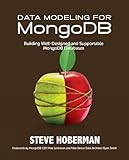Summary:Annotation Congratulations! You completed the MongoDB application within the given tight timeframe and there is a party to celebrate your application's release into production. Although people are congratulating you at the celebration, you are feeling some uneasiness inside. To complete the project on time required making a lot of assumptions about the data, such as what terms meant and how calculations are derived. In addition, the poor documentation about the application will be of limited use to the support team, and not investigating all of the inherent rules in the data may eventually lead to poorly-performing structures in the not-so-distant future. Now, what if you had a time machine and could go back and read this book. You would learn that even NoSQL databases like MongoDB require some level of data modeling. Data modeling is the process of learning about the data, and regardless of technology, this process must be performed for a successful application. You would learn the value of conceptual, logical, and physical data modeling and how each stage increases our knowledge of the data and reduces assumptions and poor design decisions.
 BookPublisher: New Jersey : Technics Publications, c2014.Edition: 1st ed.Description: 226 p. ; 24 cm.ISBN: 978-1935504702Subject(s): MongoDB | Database management -- Software | Database design | Database management | Object-oriented databases | COMPUTERS/Database Management/GeneralDDC classification: 005.75 HO DA Online resources: Location Map
BookPublisher: New Jersey : Technics Publications, c2014.Edition: 1st ed.Description: 226 p. ; 24 cm.ISBN: 978-1935504702Subject(s): MongoDB | Database management -- Software | Database design | Database management | Object-oriented databases | COMPUTERS/Database Management/GeneralDDC classification: 005.75 HO DA Online resources: Location Map 






